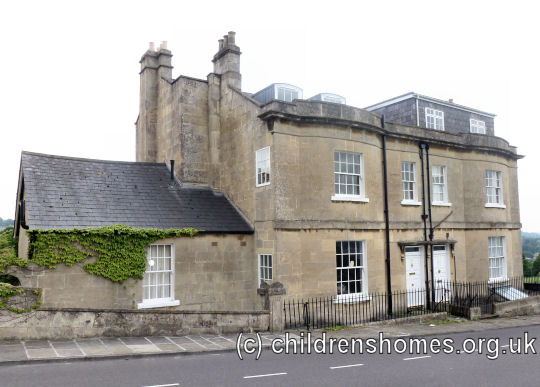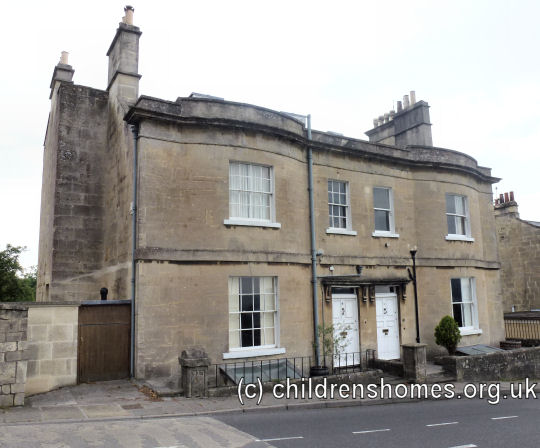Williamson Orphan Home for Girls, Bath, Somerset
Williamson Orphan Home for Girls was established in 1860 by Mrs Jane Williamson of Widcombe. She had previously started a small home for orphan boys and girls in Leeds, prior to her moving to Bath. The object of the Home for Boys (and its companion Home for Boys) was 'to provide a Christian home and education for homeless orphan children.'
The Home originally occupied a property at 2 Macaulay Buildings, Widcombe Hill. It gradually expanded, also occupying number 6 by 1886. Number 10 had been added by 1912 but was no longer being used in 1927. Applicants for admission had generally lost both parents, although children bereft of one parent were considered orphans if the surviving parent was unable to keep a home. Many cases were received free, others with part payment. Children were received at any age, and kept until able to earn their own livelihood. A medical certificate was required as to general health and freedom from cutaneous or other infectious disorders.

2 Macaulay Buildings (left), Widcombe Hill, 2013. © Peter Higginbotham

6 Macaulay Buildings (left), Widcombe Hill, 2013. © Peter Higginbotham
As far as possible, the Home was conducted on the 'family' principle, with a mixed-age group of children living under the care of a house 'mother'. The degree to which this was possible was, however, limited by the boys and girls, and consequently brothers and sisters, being separated.
After Mrs Williamson's death, the running of all the Homes was taken over entirely by Miss Judell, without a committee.
In 1939, the Home was still operating at 2 and 6 Macaulay Buildings. In 1943, the Bath Borough Council began renting number 2 from the Williamson Homes, for use as a home for around 15 children in receipt of 'public assistance', or poor relief. This was initially a 'temporary measure' but continued for a number of years. The Orphan Home for Girls appears to have ceased operation by this time.
Records
Note: many repositories impose a closure period of up to 100 years for records identifying individuals. Before travelling a long distance, always check that the records you want to consult will be available.
- None identfied at present — any information welcome.
Bibliography
- Higginbotham, Peter Children's Homes: A History of Institutional Care for Britain s Young (2017, Pen & Sword)
Links
- None identified at present.
Except where indicated, this page () © Peter Higginbotham. Contents may not be reproduced without permission.


